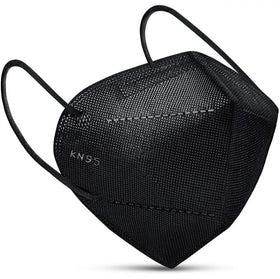
KN95 Mask: Bridging the Gap Between 3-Ply and N95 Masks
Introduction
In the wake of the COVID-19 pandemic, the demand for high-quality protective face masks surged worldwide. Two primary contenders emerged: the 3-ply mask and the N95 respirator. However, there's another player in the field, the KN95 mask, which combines the advantages of both while addressing some of their disadvantages. In this article, we'll delve into the world of KN95 masks, highlighting their advantages and disadvantages by drawing comparisons to 3-ply and N95 masks.
- Filtration Efficiency:
- Resembling the N95 mask, KN95 masks are renowned for their high filtration efficiency. They can filter out at least 95% of airborne particles, including viruses, bacteria, and fine dust, thanks to their multiple layers of materials.
- Comfort and Fit:
- KN95 masks are designed with a secure and comfortable fit in mind, similar to 3-ply masks. They cover the nose and mouth snugly, reducing the risk of air leakage.
- Durability:
- KN95 masks are constructed with multi-layered materials, making them more durable compared to 3-ply masks. They can withstand longer usage without deterioration.
- Adjustable Nosepiece:
- KN95 masks often feature adjustable nose clips that help ensure a personalized fit. This feature can minimize fogging of eyeglasses and enhance overall comfort, similar to some 3-ply masks.
- Wide Range of Applications:
- KN95 masks offer versatility for various settings, much like 3-ply masks. They are suitable for everyday use, commuting, travel, and healthcare settings.
- Availability:
- KN95 masks have become more widely available, addressing the scarcity issues that have occasionally affected N95 masks. This accessibility ensures a more reliable supply for consumers.
Disadvantages of KN95 Masks
- Cost:
- KN95 masks can be more expensive than 3-ply masks, making them less budget-friendly for individuals or families on a tight budget. However, their cost is generally lower than that of N95 respirators.
- Tighter Fit:
- While the snug fit of KN95 masks is an advantage in terms of protection, it can also be a disadvantage for some wearers who may find them slightly uncomfortable, especially during extended periods of use.
- Not Ideal for High-Risk Environments:
- KN95 masks, though highly effective, may not offer the same level of protection as N95 respirators in high-risk healthcare settings where a higher filtration rate is crucial.
- Certification Variability:
- The quality of KN95 masks can vary based on the manufacturer. Some substandard or counterfeit masks may not provide the level of filtration promised. It is essential to purchase KN95 masks from reputable sources to ensure quality and authenticity.
Comparing to 3-Ply Masks
Advantages of KN95 over 3-Ply Masks:
- Higher filtration efficiency (KN95 ≥ 95% vs. 3-ply ≤ 70%).
- Durability and longer lifespan.
- More secure fit, reducing the risk of air leakage.
- Suitable for a wide range of applications.
- Availability, with a more reliable supply.
Disadvantages of KN95 compared to 3-Ply Masks:
- Higher cost.
- Potentially uncomfortable fit for some users.
- Not as suitable for prolonged use due to tight fit.
- For regular use, it might not be the most economical choice.
Comparing to N95 Masks
Advantages of KN95 over N95 Masks:
- Cost-effectiveness (KN95 is generally less expensive).
- Greater availability and accessibility for consumers.
- Suitable for various non-medical settings.
Disadvantages of KN95 compared to N95 Masks:
- Slightly lower filtration efficiency (KN95 ≥ 95% vs. N95 ≥ 95%).
- Not recommended for high-risk healthcare environments.
- Quality and certification variability.
Conclusion
The KN95 mask serves as a valuable middle ground between 3-ply masks and N95 respirators, combining several advantages from both while addressing some of their disadvantages. With its high filtration efficiency, comfortable fit, and increased durability, the KN95 mask has become a popular choice for everyday use, travel, and low-risk healthcare settings. However, potential drawbacks include cost and a tighter fit. It's crucial for consumers to source their KN95 masks from reputable suppliers to ensure they receive the level of protection they expect. As the battle against respiratory illnesses continues, the KN95 mask proves to be a reliable and accessible option for safeguarding public health.


